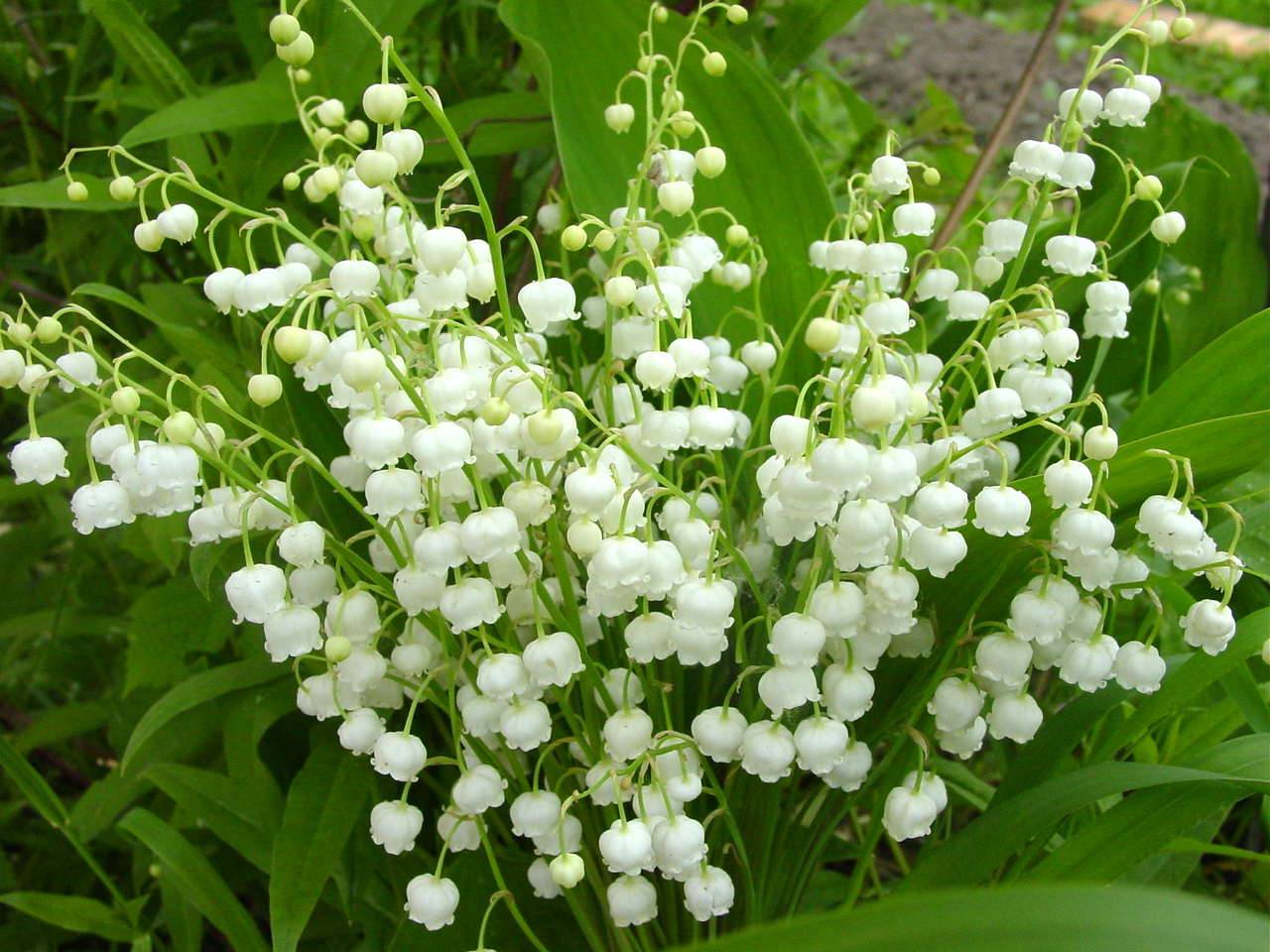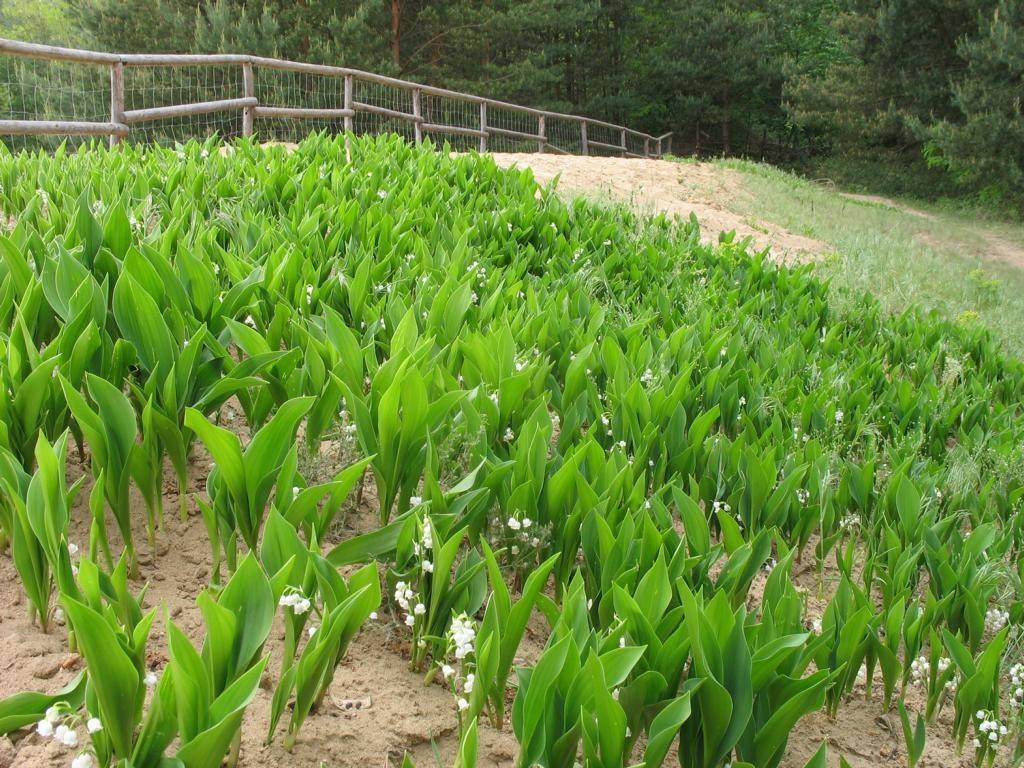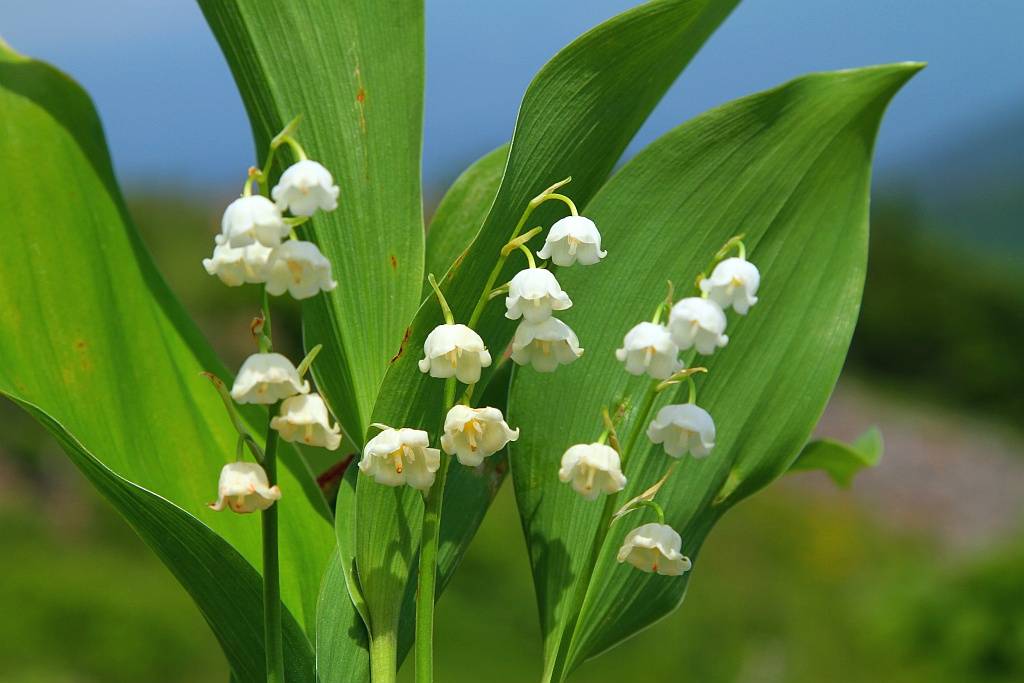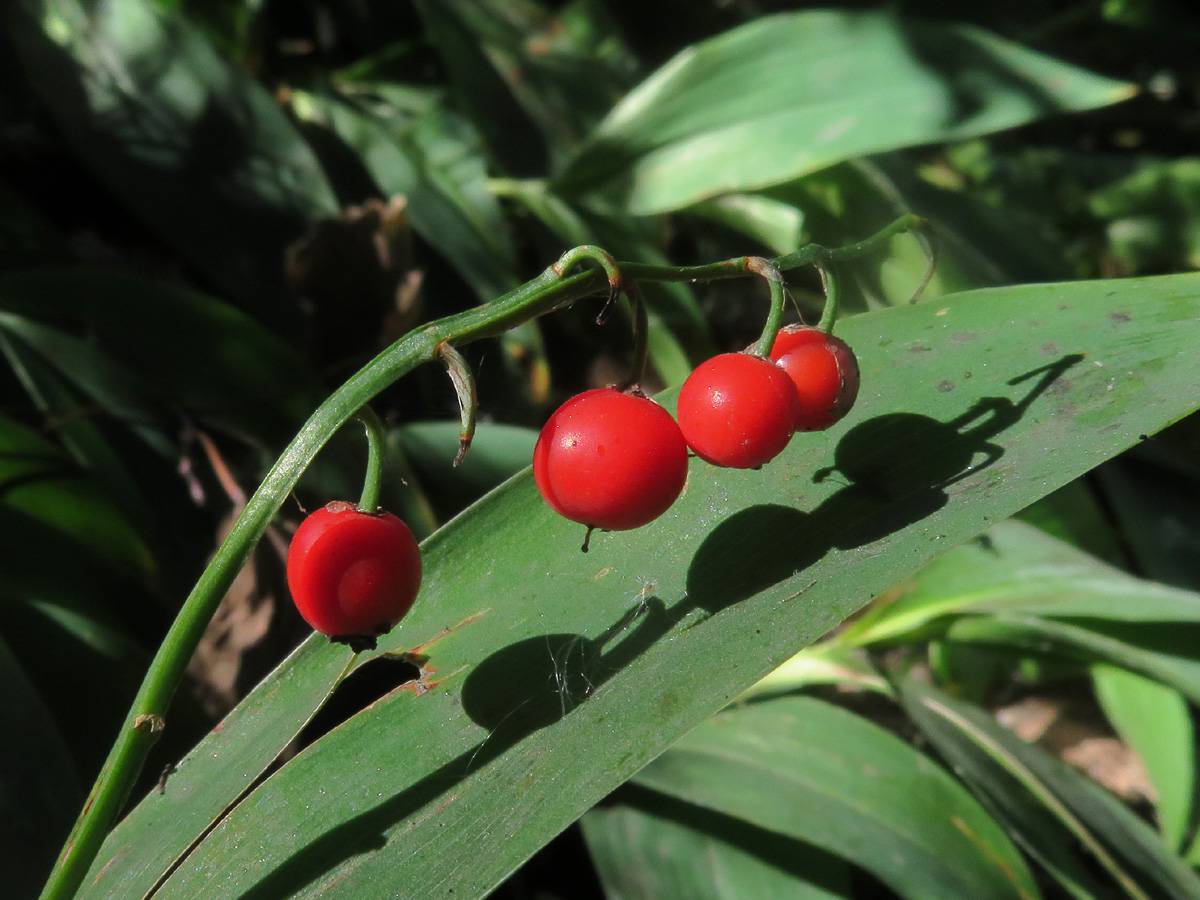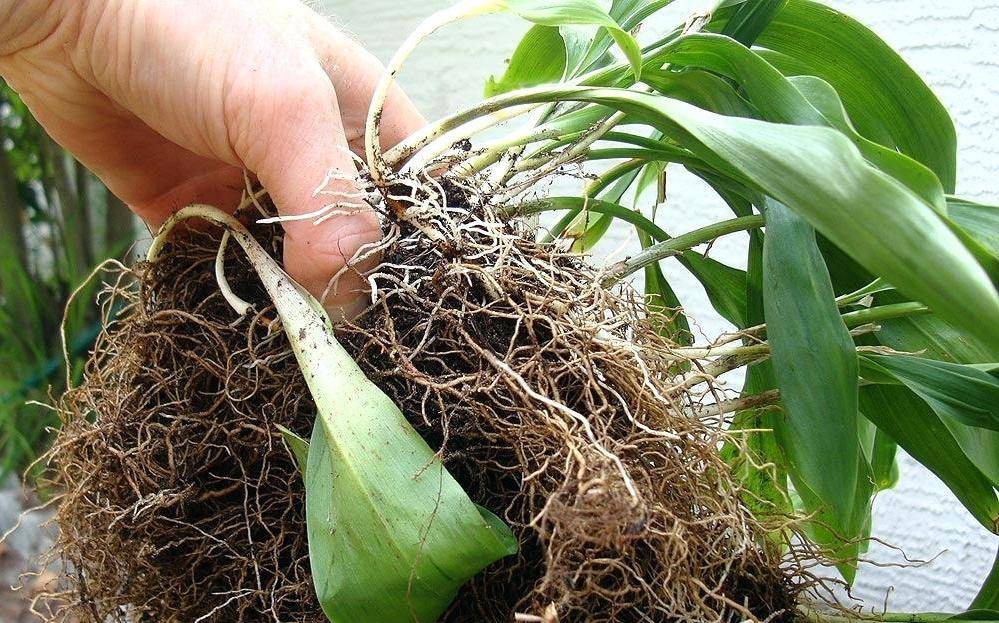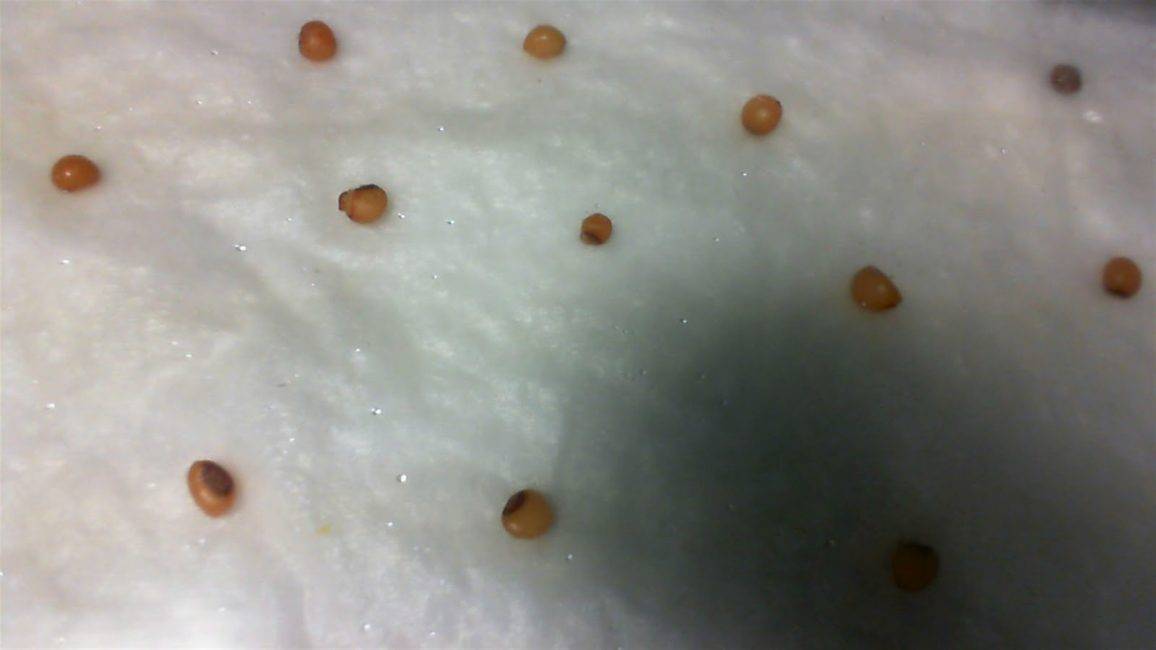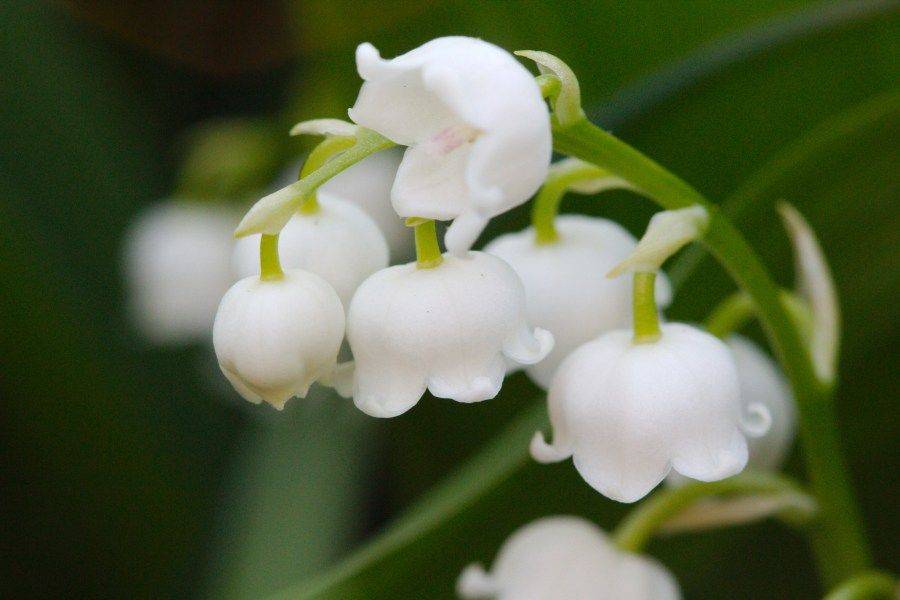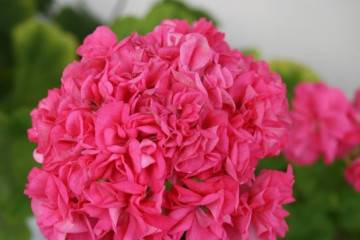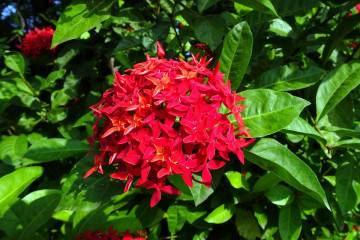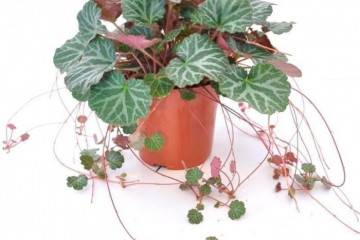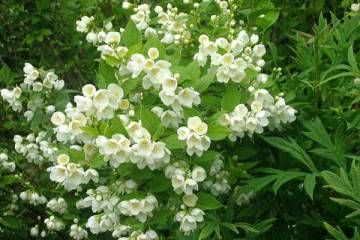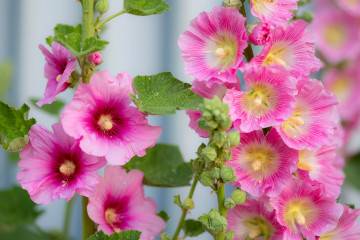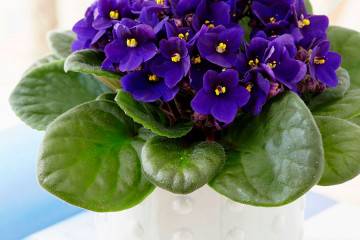May lily of the valley (Convallaria majalis) - description of the family
Content:
- What does lily of the valley (Convallaria majalis) look like?
- Classification of species derived from the May lily of the valley
- The cultivars that are most popular with horticulturists
- How the May lily of the valley reproduces
- Features of care in the garden
- When and how it blooms
- Possible growing problems
- Use in landscape design
Lily of the valley is perhaps the most beautiful spring flower. Unfortunately, it is listed in the Red Book as an endangered botanical plant species. It has beautiful emerald leaves, adorable buds of delicate white bells. The magic aroma is absolutely mesmerizing. The name of the flower from Latin sounds like "lily that grows in the valley."
What does lily of the valley (Convallaria majalis) look like?
After a long winter, the appearance of lilies of the valley announces the arrival of spring. In central Russia, this occurs in May. Despite the external fragility, the flower is quite strong. Even very dense soil and rocky surfaces are not an obstacle for him. Under favorable conditions, single plants can grow and carp even large areas.
The description of lily of the valley may begin with the leaves. The first to appear are tight rosettes of elongated leaves. True, the number of one plant does not exceed three leaves. Most often two. They grow directly from the base of the root system, and in the middle, from a large bud, a peduncle grows. On it are from 5 to 20 small bells on legs. The buds have teeth at the top and bottom.
What family does it belong to
A member of the asparagus family, Convallaria is a herbaceous perennial. Until now, experts have not decided on the subtype of the flower. Some propose to subdivide them into Keyske lily of the valley and Gorny. But their similarity makes it possible to attribute both subspecies to the same species - the family of May lilies of the valley.
Briefly about the history of appearance
The first mentions of these graceful flowers date back to the 15th century. Since then, they have been bred for the beauty of flowering brushes, emerald leaves and, of course, amazing aroma. The distribution is wide. Forest lily of the valley grows on all continents. Unlike many plants, it does not care about the type of forest, the type and quality of the soil.
It grows well on the edges of:
- deciduous forests;
- pine plantations;
- oak grove;
- mixed forests.
It tolerates the scarcity of soil well. For a long time, he became a favorite crop for selection.
In its natural environment, this flower has been destroyed by humans for centuries. Lilies of the valley in the Red Book or not, it is clear from their widespread disappearance in the wild.
Plant characteristics
The life cycle of a culture is 12-13 years. The first flowering occurs in the seventh spring. After three years, the peduncle is not released, the plant can no longer bloom. After another couple of years, the bush falls apart, forming a large number of new ones.
The leaves of the plant are of a rich emerald color, oblong in shape. The tips of the leaf plate are pointed. The plant, together with the peduncle, grows up to 25-30 cm in height.
Cultivated varieties can reach up to 50 cm. In autumn, orange-red berries with a diameter of up to 1 cm ripen from the buds. When asked whether lilies of the valley are poisonous or not, the answer is definitely yes.Lily of the valley is a poisonous plant!
The lily of the valley has a peculiar root system. It is very developed horizontally. Small leaves grow from the nodes on the rhizome, which eventually turn into young bushes.
Classification of species derived from the May lily of the valley
Depending on the habitat, lilies of the valley may differ from each other. This fact allows us to classify them as varieties of the "Maisky" species. This is the most widespread and studied species. Convallaria majalis is found everywhere in nature, except in permafrost regions. Lily of the valley rugs can be found at the edges of forests. Moreover, regardless of the type of forest. Surface roots winter well. Almost immediately after the snow melts, young leaves begin to hatch.
Lily of the valley (Convallaria keiskei)
Lily of the valley Keiske prefers to grow in forests rich in moss. It can also be found in abundance in clearings, in river floodplains. The main areas of distribution are the Far East and Siberia. Often found in areas bordering China.
In this subspecies, the root system goes much deeper. Small bushes. The color of the leaves at the root may be brown. Together with the peduncle, they do not exceed 20 cm in height. At the same time, Keiske's bells are large, about 1 cm in diameter. Although the number of buds themselves is not more than 10 pcs.
Mountain (Convallaria montana)
Mountain lily of the valley is more common in North America. Prefers mountainous terrain, so the root system is well developed. The bushes are tall - a little less than half a meter in height. In this case, the peduncle almost does not protrude above the leaves. The number of buds on it can be from 5 to 16 pcs. The bud itself reaches 9 mm from the stem to the denticles. The berries are red, about 0.8-0.9 mm in diameter.
Transcaucasian (Convallaria transcaucasica)
It is an endemic species of lily of the valley that grows in the Caucasus. In its natural environment, it occurs on rocky, dense clay and sandy soils. Convallaria transcaucasica grows in impressive colonies. Bushes are low, only about 25-30 cm tall. The leaves are juicy green, elliptical.
On the peduncle there are up to 20 pieces. buds hanging on long stalks. The bud itself consists of 6 petals. Often used to decorate gardens. A distinctive feature of this variety is a rather large opening of the bud.
Berries are red-red, no more than 7 mm in diameter. Flowering, depending on climatic conditions, from April to June.
The cultivars that are most popular with horticulturists
The most popular among connoisseurs are about a dozen varieties:
- Aureovariegata. This variety is distinguished from others by the color of the leaf plate. Longitudinal yellow or yellow-sand stripes are clearly visible on it.
- Lily of the valley Aurea has a thick yellow leaf color.
- Grandiflora. It has noticeably larger bells and large leaves.
- Albostriata. In this variety of lily of the valley, the leaf plate is decorated with cream-colored stripes.
- Green Tapestry. The leaves of this species are yellow-green.
- Hofheim. The leaf blade of the variety has a thick creamy border.
- Prolificans. This type of culture is distinguished by long flowering (about 2 months) and richness of buds. The size of the bushes is small, about 15-20 cm tall.
- Rosea. It blooms with pearl pink bells. There are about 14 of them on the peduncle.
The Chinese lily of the valley (Kupena) is very beautiful. Tall plant, over 60 cm in height. The leaves of the variety have a beige border. There are noticeable green specks on the petals. It blooms violently in May-June.
How the May lily of the valley reproduces
Lily of the valley flowers are quite unpretentious. Breeding does not require special knowledge. The main condition is maintaining the balance of light and shadow.
It can be grown by seeds or underground rhizomes. You can plant lily of the valley in early spring or early autumn.
Vegetative propagation (division of the rhizome)
Healthy rhizomes are suitable for vegetative propagation. For each new bush, you need to leave a couple of buds with roots. The older the mother plant, the more powerful the root system and the more live buds.
Delenki need to be planted in rows. The distance between the bushes is at least 10 cm. Each seedling should be deepened by no more than two centimeters. The sprout bud must remain on the surface. For autumn planting, winter shelter is required. For this purpose, a layer is suitable:
- dry peat;
- sawdust;
- spruce needles;
- dry foliage.
Growing from seeds (what is it used for)
Lily of the valley can also be propagated by seeds. This method is more often used by breeders to develop new hybrids. For an amateur, this method is not very suitable. Firstly, the berries (seeds) of lily of the valley are poisonous, which means they require special care when working with them, and secondly, flowering occurs only in the 6-7 season.
Features of care in the garden
An ordinary lily of the valley does not need special care. The main thing is not to allow the soil to dry out. Lack or lack of moisture will not kill the plant, but will delay flowering. Or you can't wait for it at all.
Weeds should be removed to maintain planting order.
What conditions do lilies of the valley like
The garden lily of the valley is a shade-loving flower, but without the sun it becomes shallow. Leaves turn pale. Flowering is poor and late. Crops grow best in lace shade. Diffused light is needed especially in the morning.
What is the plant afraid of
In addition to strong shade and lack of moisture, the culture does not tolerate strong drafts, especially cold winds. If the planting is not protected, the plant will simply die. Buildings, bushes can act as a fence.
Watering
The plant is very hygrophilous. Needs frequent watering. During the flowering period, the daily is shown. The rest of the time, 2-3 times a week is enough.
Mulching
Mulching lilies of the valley has three goals:
- moisture retention;
- frost protection;
- additional feeding.
It is advisable to use loose substances for this purpose, such as peat, humus, sawdust, and so on.
Loosening
Loosening the soil is beneficial for almost any plant. Lily of the valley is no exception. If, after each watering, the root zone is skimmed, the aeration of the root system will improve.
Top dressing
It is advisable to feed garden lilies of the valley with organic matter. The first time is already a month after sowing or planting. In the future, it is enough to apply fertilizer every spring. If you repeat the feeding at the beginning of summer, there will be no harm.
Indoor plants need to be fed with universal complex fertilizers 1-2 times a month.
Transfer
Very often it is not recommended to disturb the plants. When to transplant lilies of the valley, it is decided depending on the season. Transplantation is painlessly tolerated by a flower in early autumn. The site should be prepared in advance:
- dig a shovel onto a bayonet;
- select all the roots;
- add humus if the soil is thin.
When and how it blooms
The most common question among amateurs is when do lilies of the valley bloom? After winter, I especially want beauty. Their flowering will mark the arrival of warmth, summer, a riot of colors of the plant world.
Types of flowers
The peduncle begins from the bud, which is located at the root, between the leaves. It grows very quickly above the leaves. A brush of small bells is formed at the apex. They are more often white, but there are also pink lilies of the valley. The number of buds can be from 5 to 20 pcs.Under the weight of the flowers, the inflorescence bends in an arc, and all the buds take a position with their heads down.
Flower shapes
The flower shape is a bell of 6 petals. The diameter of the flower is about 1 cm. The tips of the petals are bent. Depending on the variety, the bell bowl is more open or more compact. Attached to the peduncle on long petioles.
Flowering period
In central Russia, lilies of the valley can bloom from the end of April. Earlier or later flowering depends on the climatic conditions of a particular area. The flowering period is 10 to 20 days. Some hybrids can bloom for even a month.
Changes in care during flowering
In an open summer cottage, only watering becomes more frequent during the flowering period.
For indoor lilies of the valley, an increase in daylight hours up to 12 hours a day and a decrease in temperature to +16 to +21 degrees are shown.
Possible growing problems
For all its unpretentiousness, lilies of the valley are also not alien to disease. Some pests love them too. To prevent damage to flowers, they need proper care.
Pests
Sawfly beetles are dangerous for lilies of the valley. Rather, their larvae. This voracious horde can gnaw the entire aerial part of the plant. If a pest is found, action should be taken urgently. If the lesions are critical, it is better to destroy the bush. For prevention, all plantings must be treated with insecticides, such as Actellik. The benefit of such drugs is that they have a wide spectrum of action. They are capable of exterminating other unwanted guests.
Diseases
The main diseases of lilies of the valley are Gray Rot and Gleosporia.
The first appears when the plantings are thickened and there is no ventilation. It is better to transplant the lilies of the valley, and get rid of the specimens affected by the fungus. The rest of the site must be treated with a Bordeaux mixture, a solution of copper sulfate.
Another disease, Gleosporiasis, appears as creamy specks with a dark border. The affected leaves should be removed and disposed of immediately. Treat plantings with fungicides, for example, Previkur Energy.
Signs of improper care
How lilies of the valley look depends on how they are taken care of. Improper care greatly affects the appearance. The turgor of the leaves is lost, the juiciness and color intensity disappear. Lily of the valley blooms are scarce, the buds are small. The flowering time is noticeably reduced.
Use in landscape design
Lilies of the valley are often used in landscaping. There are all the prerequisites for this:
- they are unpretentious;
- bloom for a long time;
- they have beautiful leaves;
- have a magical aroma.
When landing, you need to take into account some features. If the goal is to lay a long-term flower garden in a country house or a personal plot, then a deep fence should be made around the perimeter of the plantings. Otherwise, the plantation will grow and swallow neighboring plants.
The culture looks decorative in the vicinity of ferns. Serves as a background for lush peonies, spray roses. But it is best to plant them near a spreading tree, for example, oak, linden, maple. In this case, lilies of the valley cannot harm a large tree, and a lacy shade is provided for them. And the beauty will turn out almost like in the natural environment.
For an amateur gardener, lily of the valley is a fairly convenient flower. It requires almost no care, and the beauty of the site is ensured. The main thing is to take into account the experience of other gardeners who have been cultivating crops for more than one year.
